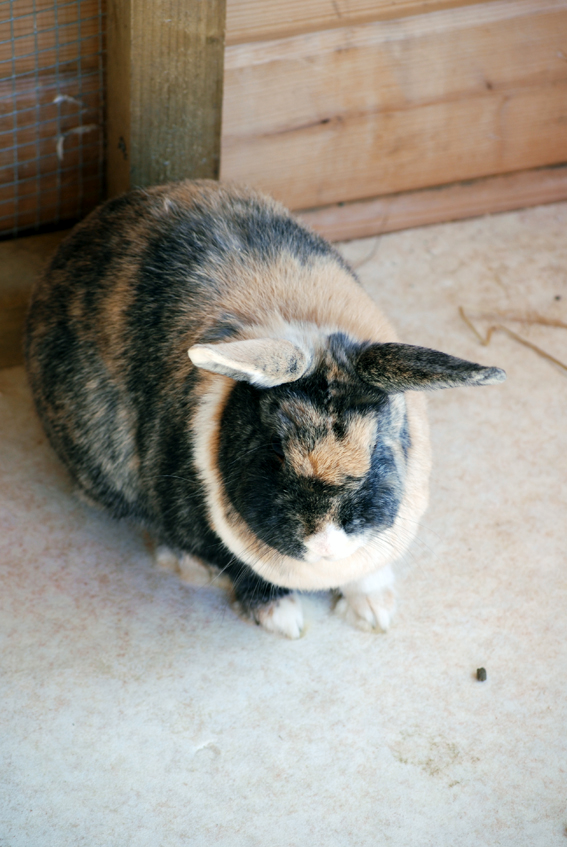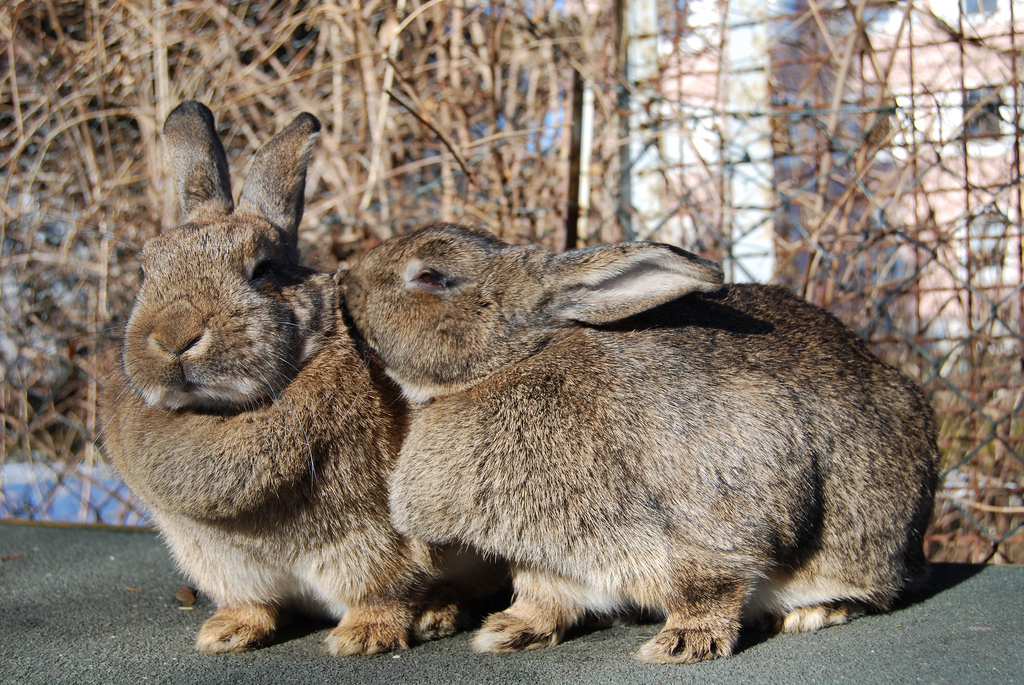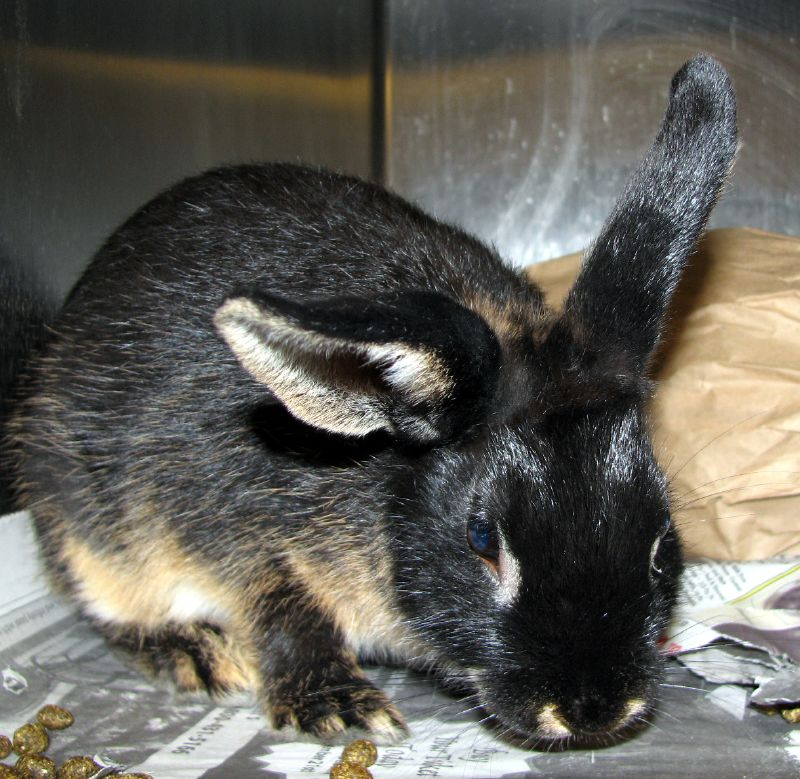Basic Rabbit Color Genetics: Extension and Agouti
Note: Most rabbit breeders place Agouti before Extension. I choose to place Extension before Agouti to provide consistency throughout this website.
Rabbits are one of (if not the most) recently domesticated livestock species as they were not domesticated until the middle ages in Europe. It is estimated that there are over 6 million pet rabbits within the US and their popularity is growing as both pets and livestock. With rabbits increasing popularity, color has become more important, and although color should never be considered more important than health and conformation with any animal, most people do take color into account when choosing a pet or when breeding for fur. As with all mammals, rabbit coloration starts with two (2) color genes, Extension and Agouti.
The Extension Locus:
Extension (MCR1) is one of the genes that controls how black (vs only red or yellow) pigment can be produced. In rabbits there are thought to be four (4) different alleles at extension. These are in order of Dominance: ES, E, eJ and e. There was once thought to be a fifth allele at extension ED. However, research has found no evidence for this allele.
Steel (ES): Steel modifies the placement of the Agouti hair bands, leaving a silvery or golden highlight at the tip of the hair. Interestingly, Steel is only expressed if the rabbit also carries the Wild-type (A) at Agouti. This is because the Agouti hair band must be present for Steel to express. Some breeders say that Steel expresses to some extent on at animals but only in the tan areas. Steel rabbits who are aa at Agouti will be self colored as there are no Agouti bands present for Steel to modify. Steel is also an incomplete dominant with homozygous steel (ESES) in effect erasing the Agouti hair band altogether producing a self colored rabbit. Steel is a very tricky allele. It appears that in certain cases a Steel rabbit who also carries the wild-type agouti allele (A) can also appear self. Please see this thread on the Rabbittalk.com forum. Stumped agouti or Tan Pattern Kit from 2 Self Parents.
Wild-Type (E): The second (2nd) allele at extension in rabbits is E. It is the wild-type allele. This means it is the original Extension allele found in wild rabbits. The Wild-Type allele is the one allele in rabbits that allows Agouti to express normally (more about that in a minute). Because it is recessive to ES, it will only express if it is homozygous (EE) or if it is heterozygous with Japanese Brindle or red (EeJ or Ee).
Harlequin (eJ): The harlequin aka Japanese Brindle coat color in rabbits is caused by the third allele at extension. This color is, eJ, is recessive to Steel (ES) and incompletely recessive (it can "leak") to wild-type (E). In the absence of other modifiers or patterns, it causes black stripes or color blotches in the coat. Harlequin will generally only express if it is homozygous (eJeJ) or if is heterozygous with e (eJe). However, it can express on an chestnut based (Eej A-) rabbit. This results in striping in the coat. The most common areas are the edges of the ears and the belly. When this happens the rabbit is called harlequinized. Rabbits that are eJeJ will be harlequin regardless of their ASIP alleles. This means that a rabbit will be harlequin even if it is aa or even atat on the ASIP locus. However, if the rabbit is eJe then the it will only be true harlequin if it is A- at the ASIP locus. If it is at- or aa it will express some degree of "tort" coloration.
Non-Extension (e): The most recessive of the extension alleles is e. Unlike in some mammals, if a rabbit carries two copies of this mutation, black pigment can still express in certain cases. If a rabbit is ee at extension, and also carries wild-type agouti (A), the rabbit will be red or orange with Agouti characteristics. If a rabbit is aa as well as ee they are called Tortoiseshell (most often shortened to just Tort). Tort rabbits are red along the topline with black (varying in intensity), along the underside. ee combined with at is discouraged in most breeds because the characteristics of at will still be seen along with the characteristics for tort. Such a rabbit is often called a "Fox" or "Torted Otter".
The "A" Locus:
The ASIP Gene ("A" Locus) is fully expressed if the wild-type allele E is present at extension. It will be expressed to a lesser extent if ES, eJ or e are present. There are three known alleles at Agouti in rabbits. These are in order of dominance: A, at, and a.
Wild-type (A): Wild-Type in rabbits causes banded hair with lighter coloration in the eye circles, inside of ears, at the nape of neck (sometimes called the triangle), nostrils, underside of jowls, belly, beneath the tail, and also some markings on the feet . Along with E at extension this is the color of the wild rabbit. Rabbits with wild-type at Extension and Agouti are commonly called “Chestnut” or "Castor". This rabbit will be brownish in appearance with the Agouti characteristics and banded (horizontal striped) hair. Wild-type will express in rabbits that are homozygous for red (non-extension) but the coloration is altered to red or yellow with banded hair and the lightened areas caused by Agouti.
Tan (at): Tan is only well expressed in the presence of the wild-type (E) allele at extension. Similar to black and tan in dogs, it causes a black coat with tan in the areas normally lightened by Agouti. It can express on ee rabbits with the results being called "Fox" or "Torted Otter".
Self (a): The self allele at Agouti is the most recessive of the alleles at Agouti in rabbits. Self can express with red (ee) or black (ES or E). If the rabbit is ee some of the black pigment in the coat is switched to red or yellow but is also leaves darker pigment along the belly, nose, ears, and tail. If no other modifiers or dilutions are present this is called Black Tortoiseshell (Tort). If E or ES is present the rabbit will be self black or black based.





